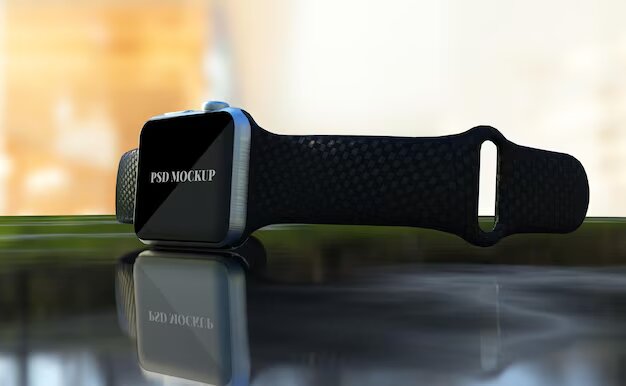The craft of watchmaking has developed since the first watches were created not long after 1500, producing stunning timepieces that exude sophistication, beauty, and luxury. From the 16th-century “clock watch” to the 20th-century “quartz wristwatch,” the watchmaking business never ceases to astound consumers with its sophisticated machinery and cutting-edge technology. Technology and materials science developments have drastically changed the watchmaking industry. Modern materials are reshaping watchmaking and usefulness, and traditional timepieces (made of gold, stainless steel, and other metals) are making way for a new era. High-tech materials like carbon fiber composites, titanium, high-tech metal alloys, tungsten, and porcelain are being used to create watches that are lighter, more resistant to corrosion, and aesthetically pleasing while preserving the accuracy and tradition of classic watchmaking. These materials offer novel and technologically superior alternatives to traditional watch components. The use of cutting-edge materials in watchmaking and their implications for the industry's future are examined in this article.
Silicon: Anti-Magnetism and time precision
A mechanical watch's balancing spring may get magnetized and adhere to the metal parts of the watch when it is subjected to a magnetic field, changing the rate at which the watch ticks over. In severe circumstances, the watch may completely stop. Due to its exceptional resistance to corrosion and anti-magnetic qualities, silicon has transformed the watch mechanism industry and resolved the magnetization issue with mechanical watches. Brands including Breguet, Horage, and Ulysse Nardin have reduced friction within their movements by incorporating silicon components (e.g., balance springs, hairsprings, escape wheels, and anchors), which has improved accuracy and longevity. Due to its lightweight, unique geometry, and superior aerodynamics, silicon exhibits clear advantages that quadruple power reserve and enable an amazing degree of accuracy of -3/+2 sec every 24h, enhancing overall performance and longevity.
Carbon Fiber: Dynamic Allure
All forms of carbon fiber products, including laminates, forged fibers, sheets, and nanotubes, provide an eco-friendly manufacturing choice. Carbon fiber, well-known for its strength-to-weight ratio in the automotive and aerospace industries, has made its way into the core of watchmaking. Carbon fiber has been used in watchmaking by companies like Hublot, Bulgari, and Ulysse Nardin to manufacture robust and lightweight watch parts. In addition to its strength, carbon fiber composite is valued for its distinct aesthetic appeal, intrinsic corrosion resistance, capacity to tolerate high temperatures and more covert appearance as a watch. This material gives conventional timekeeping a contemporary, sporty twist on everything from dials to casings.
Titanium: A Feather-light Revolution
Since the 1970s, researchers have looked at the usage of titanium, which has good biocompatible chemistry with humans, to create pedestals, bracelets, straps, clasps, and watch casings. High-end waterproof sports watches with timing features are where titanium watches first appeared on the scene. The Japanese watchmaker Citizen debuted the titanium watch 53 years ago in 2023. Since then, titanium's application in watchmaking has changed. Today, watches are made of industrial pure titanium, titanium alloy Ti-15333, and titanium-6Al-4V. Titanium has been a revolutionary material in the watchmaking industry. Titanium watches possess superior specific strength compared to other metal materials, and they are lightweight, perspiration and seawater-resistant. Its surface hardness is also twice as high as that of stainless steel. Because of its hypoallergenic qualities, it doesn't feel as cold as regular metal when worn, and it also has good skin affinity, doesn't cause allergic reactions, and looks nice. Acknowledging its potential, watchmakers such as Omega Seamaster, Tag Heuer, Baltic, Rolex, and Bulgari have used titanium in their designs to guarantee durability and comfort for the wearer.
Ceramic: Elegance and Scratch Resistance
Ceramic was formerly only used for ornamental components, but it is now widely used in watchmaking today. Watches made of ceramic first appeared in the 1980s. Ceramics are used mostly in watchmaking because they are durable and non-corrosive. Unlike other classic watch metals like gold or stainless steel, ceramic has an unmatched durability. It is thought to be impervious to scratches and to retain its appearance even after years of use. Additionally, ceramic is immune to the sun's UV rays, so its hues will not deteriorate. Ceramic is a popular material for both athletic and elegant timepieces because brands like Rolex, Omega, Hublot, and IWC use cutting-edge technologies to produce a flawless finish, guaranteeing that their timepieces maintain an immaculate appearance even after years of usage.
Conclusion and Future Outlook
To sum up, the use of cutting-edge materials in watchmaking represents a revolution in the sector. The future of watchmaking is greatly influenced by these materials, which can redefine aesthetics and improve longevity and precision. The field of watchmaking has a bright future ahead of it as technology advances. Materials from the known and unknown may soon find their way into watch components. Future watches will be both technologically sophisticated and visually pleasing thanks to ongoing research and development.





